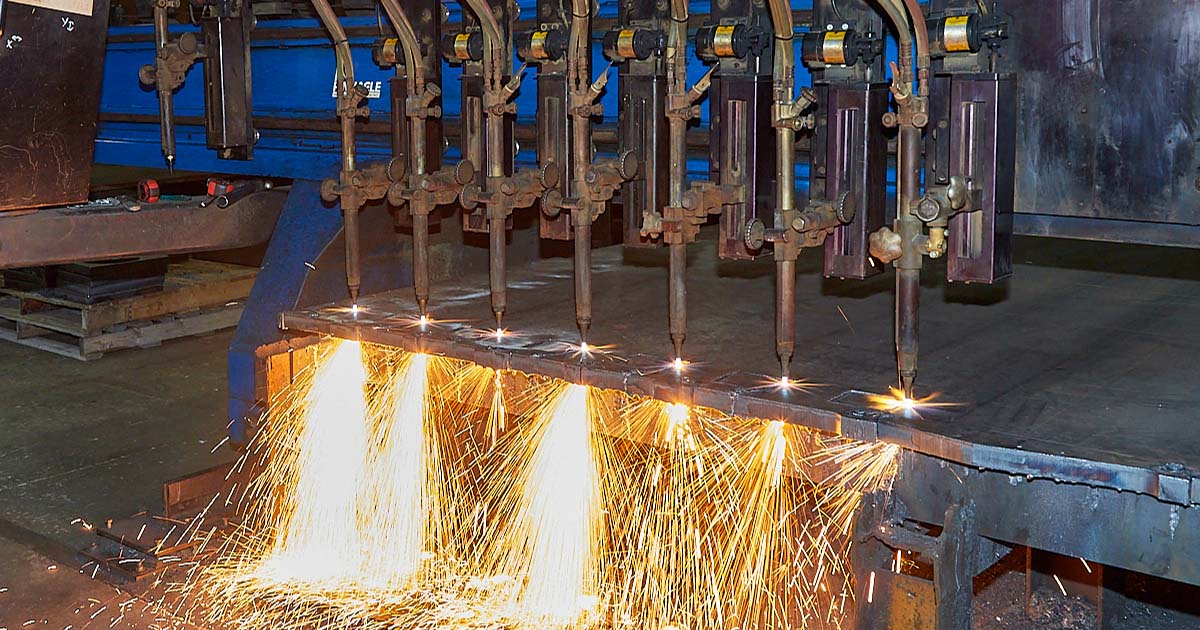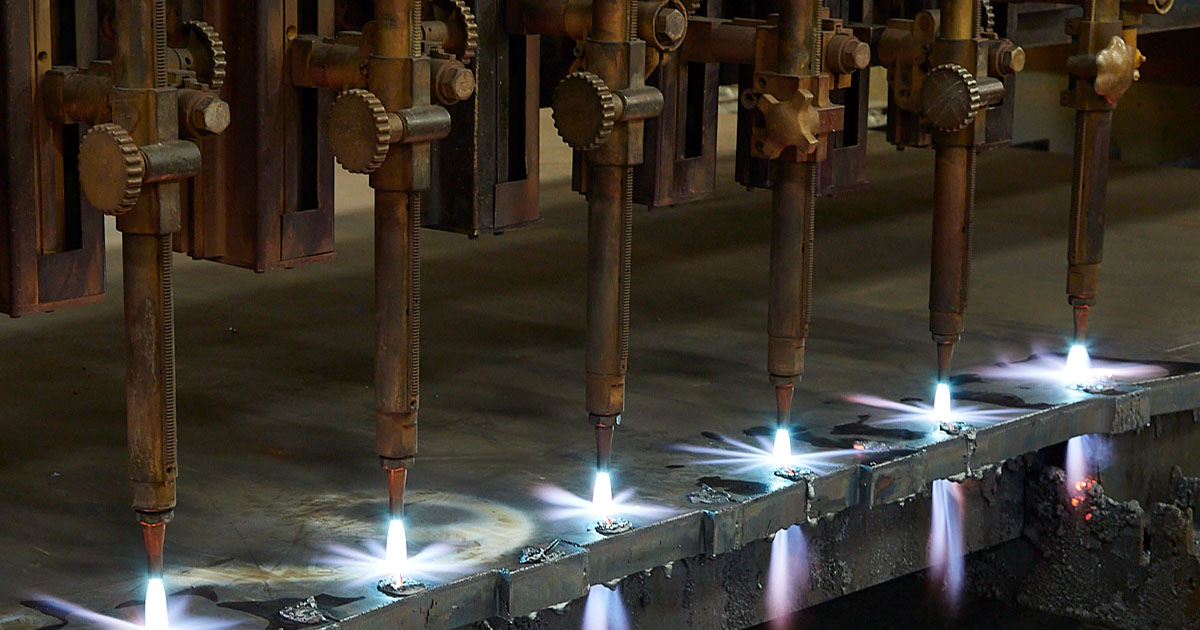
We collect basic website visitor information on this website and store it in cookies. We also utilize Google Analytics to track page view information to assist us in improving our website.
If you’re passionate about metal cutting or just keen to learn more, you’ve landed in the right place.
For over 38 years, Amber Steel has been at the forefront of metal cutting services, specializing in laser cutting, flame cutting, and plasma cutting. Our expertise has carved a niche in this cutting-edge industry, delivering precision and excellence across industrial projects big and small.
In our blog, we’ll share a mix of useful tips, innovative applications, our thoughts on sustainability in steel cutting, and more. Expect stories from the cutting floor, insights into how our processes can streamline projects across industries, and a few lessons we’ve learned along the way.
While we keep some of our trade secrets under wraps, this blog is designed to offer valuable nuggets of wisdom that you simply won't find anywhere else. Whether you’re a professional in the industry or someone fascinated by the possibilities of metal cutting, you'll find something of value here.
So, stick with us as we delve into the finer points of metal work. We’re glad to share our insights and lead discussions that matter to our industry.
How precision metal cutting propels the aerospace industry, from constructing lighter frames to enhancing aerodynamics.
The role of advanced metal cutting in automotive manufacturing, driving innovations in vehicle design and efficiency.
All about the robust and versatile process of flame cutting, ideal for tackling thicker metals with precision and ease.
Discover the art of crafting metal furniture, where cutting techniques meet design to create both functional and aesthetic pieces.
A behind-the-scenes look at the mechanics of metal cutting technologies and the science that makes them tick.
Laser cutting is where extreme precision meets efficiency, allowing for intricate designs and clean finishes.
The critical role of precise steel cutting in developing reliable and intricate medical devices.
How steel cutting supports the oil and gas industry with components that withstand extreme environments and pressures.
Known for its speed and versatility, plasma cutting slices through conductive metals with hot plasma.
Safety first! Tips and insights on maintaining a safe environment while handling powerful metal cutting equipment.
The backbone of construction, where steel fabrication and cutting technologies create frameworks that shape skylines.
Sustainability
A look at sustainability in metal cutting, focusing on practices that reduce waste and conserve energy to protect our planet.

Fire has been a crucial tool in human history, supporting us in numerous ways, from providing warmth and light, to cooking food. However, flame cutting is a remarkable application that takes the power of fire to a whole new level.
This process involves using a combination of intense heat and a focused jet of oxygen to slice through various types of metals, making it an indispensable technique in industries like construction, manufacturing, and metal fabrication.
At its core, flame cutting relies on the principles of combustion and oxidation. When a flammable gas, such as acetylene or propane, is ignited with oxygen, it produces an incredibly hot flame that can reach temperatures exceeding 3,500 degrees Celsius (6,332 degrees Fahrenheit). This extreme heat causes the metal in its path to rapidly oxidize, forming a molten metal oxide that the force of the jet blows away, leaving a clean and precise cut.
To perform flame cutting, specialized equipment, such as torches and cutting machines, are used to control the direction and intensity of the flame. The operator must have a keen understanding of the science behind the process and skillfully adjust the flame's settings to suit the metal's thickness and type, ensuring optimal results.
Flame cutting finds a wide range of applications across different industries. In construction, it is used to cut through thick steel plates to create structural components for buildings and bridges. Manufacturers rely on flame cutting to produce intricate shapes and parts for machinery and equipment. Additionally, artists and artisans use this technique to craft metal sculptures and decorative pieces.
Understanding the science of flame cutting is not only intriguing but also vital for ensuring safety and precision in its application. In this blog post, we will delve deeper into the fundamental principles, factors that impact the quality of flame cutting, best materials to use and some advantages and disadvantages of the practice.
Let’s begin.
Flame cutting is a thermal process that uses oxygen and a fuel source to separate and shape steel and metals.
Flame cutting is conducted using a torch where the oxygen and a fuel gas are passed. A ring of jets in the torch nozzle preheats the surface and a separate stream of oxygen directed from the central jet performs the cut. Rapid oxidation of the material occurs, and the portion is removed by the pressure of the gases.
With additional accessories this portable cutting process can also be used for brazing, soldering and welding. Before the development of plasma and laser cutting techniques, flame cutting was the most popular way to cut shapes from steel plates and sheets. As such, it became an essential technique in the construction of many steel structures.
Flame cutting is a thermo-chemical process that requires pure oxygen. And when we say pure, we mean a 99.5% minimum purity, often found in cylinders and bulk systems. If the oxygen is just 1% less in purity, there is a decrease of 15% in cutting speed and an increase of almost 25% in consumption of cutting oxygen. This is why it is critical to have solid connections, good hoses and sealed equipment to stop any impurities from entering the process.
Ignition temperature of the workpiece must be lower than its melting point.
Oxide melting point must be lower than workpiece so it can be cut away by the oxygen jet.
Oxidation reaction between the oxygen jet and the workpiece must be substantial enough to keep the ignition temperature.
Gaseous reactions during the process cannot dilute the cutting oxygen.
Oxy-fuel cutting needs to be mixed with a fuel gas such as propane, methane, acetylene, and propylene in order to reach the ignition temperature. The type of gas used is based on whether the process is manual or mechanized, the material type and the work being managed.
The flame preheats the steel to a hot temperature, roughly 1200K, which will then ignite the oxygen stream. Once ignited the energy from the flame and oxidation heat the cutting area to a temperature of roughly 1900K. Flame cutting only works when the oxide formed has a lower melting point than the metal being cut. Take for instance aluminum, which has a melting point of 1,200-1,300 °F, but the oxide is 5000+°F. In the case of oxidation resistant metals, like aluminium, chemical fluxes or metal powders are added to the cutting stream to help the process.
Like other cutting processes, oxy-fuel gas cutting relies on a torch with a tip or nozzle. It can be found inside the torch where the gas and oxygen are mixed together in the correct proportions to preheat the flames. The oxygen oxidizes the hot metal, and the nozzle aims the oxygen jet into the cut.
A flame cutting torch is a flexible tool, easily taken right to the work site. The torch also has a 360° “cutting edge”, allowing for cutting of both straight and curved edges. When the torch is moved across the work piece at a smooth rate, the operator can produce a continuous cutting action. Flame cutting torches can be operated manually or by a mechanized operation, with the latter improving the accuracy, speed and finish of the cut.

The top determinant of quality is the how good the operator is, but there are other factors that can also influence the quality of the final cut. Factors will vary depending on the material and condition of the metal being cut. Here are a few:
Choosing the right cutting tip, as there are numerous options to pick from
Maintaining the right cutting oxygen pressure
Ensuring proper preheating. Without this step, flame cutting will not produce a quality cut
Using the proper cutting speed by increasing the oxygen pressure and using a high-performance nozzle design can increase cutting speeds by 30%
Choosing the right fuel gas
Having a sufficient gas supply system for both the fuel gas and oxygen
Materials that are successfully flame cut will:
Oxidize easily at pre-heating temperature
Have a melting point of oxides lower than the melting point of workpiece
Have a low viscosity oxide
Possess low thermal conductivity
With these factors in mind, low carbon and low alloy steels work best, while many non-ferrous metals cannot. One exception to this is titanium, despite not having these properties it still works well with the flame cutting process.
Flame cutting is the right approach for many design projects. Here are some of the work it can be utilized for:
Flame cutting’s mainstay is cutting and profiling sheet and plate.
Works well for a variety of weld edging preparations.
U-profiles for single and double U-butt welding of thick plate.
Material thickness capability can vary and depends on the nozzle, oxygen pressure and material composition. Thicknesses less than an inch up to 100 inches.
Kerf widths (the slit made by the torch) depend on thickness of material and diameter of cutting jet. Kerf width control up to 2 inches thick.
Flame cutting can also produce cut edges with a smoothness comparable with traditional metal cutting machine tools.
Flame cutting posses many advantages. Here are a few:
It has a lower cost and it is a lower investment compared to other techniques
When dealing with thick metals, flame cutting is the best option, cutting up to 100 inches thick, well beyond the capacity of plasma or laser cutting.
It is portable, easily travelling to various locations outside of the workshop.
It doesn’t require an electrical power supply. All that is needed is a cylinder for oxygen, a cylinder for fuel, hoses, torch and a striker.
It can be integrated into CNC systems.
Although is it is a cost-efficient and versatile technology, flame cutting also has its disadvantages. Here are a few:
It is limited to the types of materials it can cut. In general carbon steel, low alloy steels and cast irons are best. Other materials will not be cut cleanly by the oxy-fuel cutting process.
It is normally slower than plasma cutting and waterjet cutting options.
Due to the intense heat required in the process, the metal edges can frequently form a thin and brittle layer of steel called the decarburized layer. Depending on the use case of the metal this made need to be removed.
The area near the decarburized later is called the HAZ or heat affected zone, and it can also be impacted by the heat from flame cutting. Without post-cutting heat treatment, such as annealing, the metal in the HAZ can become brittle, leading to cracking.
Flame cutting is one of the most common steel cutting technologies on the market.
Originally done by operators with single torches, today you can have manual, mechanized and even CNC flame cutting.
For many jobs, oxy-fuel cutting is still the process of choice for extreme material thicknesses. Flame cutting also works well for massive structural applications, like large I-beams. The bigger the job, the more trust you need in a skilled manual or machine operator. They have a feel for the process, know the power of the flame and know how to make the quality cuts.